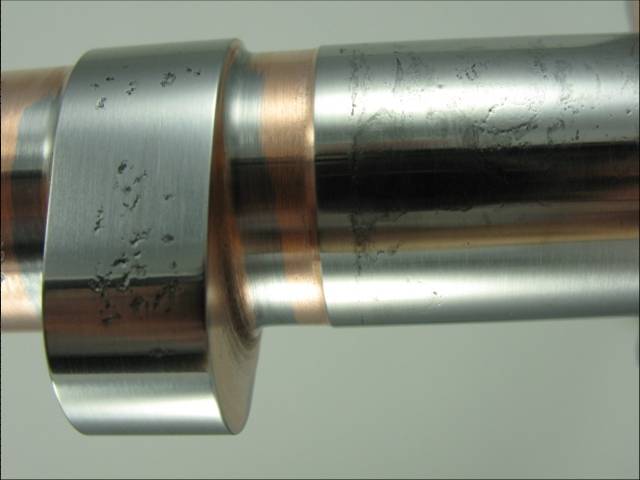Tom-D
Taxi to Parking
- Joined
- Feb 23, 2005
- Messages
- 34,740
- Display Name
Display name:
Tom-D
http://eaaforums.org/showthread.php?2514-Mike-Busch-Maintenance-Forums
Interesting picture in post #22
Interesting picture in post #22
This one?

I thought that Aeroshell 15W-50 contains the relevant Camguard additives.
Incidentally I tried to buy Camguard here in the UK, without success.
But maybe there is no point, as I fly every week, for a minimum of 1hr.
For a couple of years I used to alternate between Aeroshell 15W/50 and Exxon Elite, doing oil analysis (avlab.com) and never saw any statistically significant difference.
Is there evidence that Camguard does anything useful - on engines that are run regularly? I've never seen it.
For a couple of years I used to alternate between Aeroshell 15W/50 and Exxon Elite, doing oil analysis (avlab.com) and never saw any statistically significant difference.
Is there evidence that Camguard does anything useful - on engines that are run regularly? I've never seen it.
I thought that Aeroshell 15W-50 contains the relevant Camguard additives.
Incidentally I tried to buy Camguard here in the UK, without success.
But maybe there is no point, as I fly every week, for a minimum of 1hr.
Those roller tappets sure don't stop rust!
If you always fly 2-3 times per week you could probably get by with mineral oil provided you changed it every month or 20 hrs whichever came first. But if you're like the vast majority of owner/pilots who get an hour or two per month on the average with several long periods of inactivity during the winter, something like Camguard is likely to pay huge dividends.I fly twice a week and use shell 15/50 .Have used aero shell on three aircraft a never had a problem . price works out about the same as the oils without an additive.
If you always fly 2-3 times per week you could probably get by with mineral oil provided you changed it every month or 20 hrs whichever came first. But if you're like the vast majority of owner/pilots who get an hour or two per month on the average with several long periods of inactivity during the winter, something like Camguard is likely to pay huge dividends.

This picture freaked out the 15 Lycoming engineers that saw it during a 3 hour lecture I gave them. This was from an engine that had 300 hours over a year and a half. The engine was torn down because of a prop strike. Roller cams are not the solution to the Lycoming valve-train problem.
Ed
Edward Kollin
Technical Director
Aircraft Specialties Lubricants
I never could understand not flying in winter months. No bugs, thick air, engine runs great with lots of O2, little to no traffic, pretty scenery after a fresh snow, and no thermals!
If you always fly 2-3 times per week you could probably get by with mineral oil provided you changed it every month or 20 hrs whichever came first. But if you're like the vast majority of owner/pilots who get an hour or two per month on the average with several long periods of inactivity during the winter, something like Camguard is likely to pay huge dividends.
This picture freaked out the 15 Lycoming engineers that saw it during a 3 hour lecture I gave them.
Ed
Edward Kollin
Technical Director
Aircraft Specialties Lubricants
Roller cams are the answer to lift profiles, if you aren't looking for a faster ramping to max lift, a roller has little benefit. If you are looking for increased volumetric efficiency especially in naturally aspirated or maximum performance supercharged engines, rollers are the answer but only because they allow for more aggressive grinds. They also allow for a broader torque band because you can get the same duration between .010 lift with about 7-10 degrees less total duration than with a flat tappet which also allows for a lower, smoother idle.
Interesting reply, Edward, with the oil analysis claim which is pretty amazing. Halving of most of the oil analysis metals would be very good.
How much Camguard would one put into an IO540?
It costs $30 here in the UK, plus shipping.
It' a shame that Lycoming used exactly the same profile as the flat tappet cam.
Ed
Edward Kollin
Technical Director
Aircraft Specialties Lubricants
I give away flight time in my 150, its cheaper than engine work........
FWIW, the CG bottles are half a quart each. But like many owners, I never fill my engine sumps with oil. If I were you I'd probably go with eight quarts of oil and one pint of CG. You could even save 1.6 oz of the CG for use with 2 qt of make-up oil.I've bought 3 bottles of Camguard and will see if it improves the metals in the oil analysis.
My engine takes 10qts (max) so I will make that 9 and put 1 bottle of CG in there.
Not sure I understand... are you referring to anything more than 10qts in an IO540-C4 going straight out of the breather?
After a service on which the oil filter was changed, I put in 10qts, of which 1qt "vanishes" and I see "9" on the dipstick.
9 qt and one bottle of CG would be fine but after you've added 4 more quarts of oil the CG would be more dilute than Ed recommends.ISTM that 1 bottle of CG would be about right.
During a typical service interval (30-40hrs) I topup ~4 qts so the dilution rate is not much.
After a service on which the oil filter was changed, I put in 10qts, of which 1qt "vanishes" and I see "9" on the dipstick.

